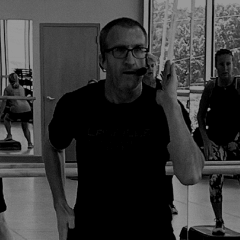With sharp surges in coal, oil and natural gas prices and escalating environmental issues, exploring new ways to power our lives is imperative.
But could physical activity hold the answer? Fitness industry disruptors certainly see potential – presenting many new and exciting ways to put our energy to good use.
Using human energy to power our lives is something that environmentally conscious trailblazers have been working towards for years. Back in 2007 Adam Boesel took a rollerblade wheel and DC generator and attached them to an indoor cycle. This contraption enabled him to charge a car battery, power a DVD player, and watch a film. Since then, the technology has advanced considerably and there are now slick indoor cycles, treadmills and elliptical trainers that can leverage an exerciser’s energy, convert it into power and deliver it to the grid.
Inspired by the idea of harnessing human energy, Boesel went on to found The Green Microgym, which uses the most modern people-powered machines to fire up the facility’s fans, keep the lights on, and ensure the sound system stays blasting.
In 2021 Gold’s Gym joined the movement, opening a flagship Berlin facility that is believed to be the greenest gym on the planet. This 55,000-square-foot ‘gym of the future’ is both CO2 and climate-neutral. In addition to using ‘Boost Bikes’ to generate electricity from pedal power, it has wall tiles made from recycled computer monitors and is filled with 10-meter-tall trees that filter out pollutants from the air and significantly improve the atmosphere. As a result, it’s the world’s first fitness facility to be awarded the Platinum LEED Certificate – an international standard that recognizes particularly sustainable construction.
There are also equipment providers playing a pivotal role in greener fitness. SportsArt’s range of elliptical, treadmills and cycles use up to 74 percent of the energy that users generate to offset energy consumption. The business is dedicated to making environmentally-sound exercise more accessible for the masses – encouraging home exercisers to adopt the green-powered equipment and providing tools, guidelines and strategies to support fitness clubs to implement sustainable equipment innovations.
According to Adam Zellner, a Greener By Design energy and sustainability expert who advises a range of corporate and government clients, green thinking fitness facilities are primed to thrive. “Taking measures to reduce energy use will reduce costs and help your bottom line, but really it’s about long-term resiliency and sustainability.”
Let’s be realistic: How much energy can we really create?
We know calories can be converted into watts, but what type of wattage can we realistically expect to generate? The power outage of elite athletes like Tour de France cyclists is not to be sniffed at – they can create about 500 watts per hour for hours on end, spiking to a power output of around 1,500 watts during short bursts of high intensity. But the average exerciser is likely to generate closer to just 100-150 watts of power for each hour they cycle on a stationary bike.
Could our exercise efforts really power our day-to-day life?
An hour-long cycle session may keep a light going for an hour or so, or help charge a smartphone, but that is just the tip of the iceberg when it comes to modern-day energy use. The TV, lights, computers, kitchen appliances, air conditioning, sound systems … imagine how much time you’d need in the saddle to power it all!
According to experts at The Green Microgym, five watts could power up a smartphone, you’ll need 10 watts for a tablet, 50 watts for a laptop, and 100 watts for a 40-inch LED TV.
The fact is, human power is unlikely to ever be the number one solution for our global energy needs. However, it can still make a valuable contribution – with minimal investment. Compared to solutions such as solar and wind, which require large wind farms and big structures, human power can be tapped into relatively easily. Gyms already exist and millions of people are already exercising daily. Innovation in the equipment space is thriving and there are many and varied equipment innovations that make it easy to harness your energy. As more fitness facilities adopt equipment innovations in this space, we can anticipate increasing awareness of the value of human power. With greater awareness comes a growing proportion of exercisers taking action for a clean, renewable energy future and a fitter planet.
As Boesel says, the aim is not to use exercise to single-handedly solve the world’s energy crisis. The goal is purely to help shape more sustainable lifestyles – you get a great workout and know your energy is going to good use.
Working out with Les Mills can also help create a fitter planet. Les Mills is partnering with Trees For The Future to plant trees on behalf of LES MILLS+ members, instructors and club partners.








